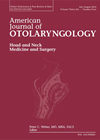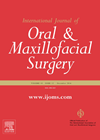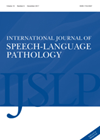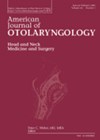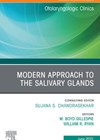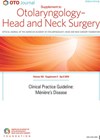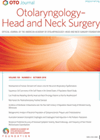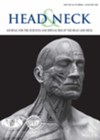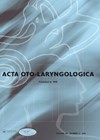
Journal Reviews
Does transoral robotic surgery improve outcomes among patients with head and neck cancer of unknown primary?
A tonsillectomy and tongue base mucosectomy is becoming increasingly accepted as the optimal surgical intervention to aid in identifying the primary source of a p16+ / HPV-related squamous cell carcinoma (SCC) of unknown origin, given that this disease almost exclusively...
Malignant transformation of leukoplakia in previous cancer patients
This is a retrospective study from Taiwan assessing risk factors in developing oral squamous cell carcinoma from surgically excised oral leukoplakia in patients with a previous oral cancer, the underlying thought being that patients with an oral carcinoma have a...
Sing it, say it, sort it: singing for Parkinson’s disease
Parkinson’s disease (PD) occurs in 1% of the population aged over 60. Changes in voice and speech are among the earliest and most prevalent symptoms of PD; reduced vocal intensity, monopitch, monoloudness, breathy and hoarse voice quality, imprecise articulation, vocal...
Gastrostomy tube dependence following TORS
Transoral robotic surgery (TORS) for oropharyngeal squamous cell carcinoma (OPSCC) is now a well-established treatment modality for early (T1-T2) disease. Accumulating evidence suggests that one of its main benefits relative to conventional chemoradiotherapy is superior long-term functional outcome, especially with...
Clinical pathological features associated with malignant change in oral leukoplakias
This is a retrospective study from Sweden where 234 patients, diagnosed between 2003 and 2013 with a median nine-year follow-up, were reviewed. Of these 234 patients, 11.5% developed oral squamous cell carcinoma. Non-homogenous leukoplakia showed a 15-times higher transformation rate...
Alcohol and hearing
Alcohol is a well-known central nervous system depressant. Individual reactions to alcohol might vary, but the connection between alcohol consumption and tolerance to loud noise or difficulties in communication in noisy environments are well-observed phenomena; for example, at evening parties....
Is there a limitation for excising parapharyngeal tumours transorally?
The parapharyngeal space is a complex anatomical space bounded medially by the oropharynx and laterally by the mandible. It is conceptualised as an inverted pyramid extending from base of skull above to the hyoid bone below. The space is divided...
Treatment of internal carotid artery blowout with embolisation and bypass grafting (nasopharyngeal carcinoma)
Carotid artery blowout syndrome (CBS) occurs when there is rupture of the carotid artery causing massive epistaxis and bleeding through the oral cavity caused by tumour invasion, surgery, radiotherapy, or infection. This article proposes a revascularisation strategy for internal carotid...
Structures determining T4a, T4b
This paper for tertiary cancer centre in India attempted to determine whether patients with T4b oral cancers involving the 'masticator space' should be treated with survival intent comparable to T4a cancers. Over a 7-year period, 30 patients with T4b cancers...
Narrow band imaging in the management of carcinoma of unknown primary
This was a retrospective study to assess the utility of narrow band imaging (NBI) in the detection of a primary site in carcinoma of unknown primary (CUP). Patients with CUP who underwent transoral robotic surgery (TORS) and preoperative imaging with...
Preventing major postoperative haemorrhage following TORS
Transoral robotic surgery (TORS) has become an increasingly utilised treatment modality in the management of oropharyngeal squamous cell carcinoma (OPSCC). Postoperative haemorrhage, although uncommon, is a significant complication. To ameliorate this risk, transcervical ligation of branches of the external carotid...
Does use of pectoralis muscle myocutaneous flap (PMMCF) reduce postoperative pharyngocutaneous fistula complication after salvage laryngectomy?
Salvage laryngectomy for recurrent laryngeal carcinoma following failed radiotherapy or chemoradiotherapy is associated with high postoperative complication rate. The primary aim of this paper was to assess whether use of muscle myocutaneous flap (PMMCF) as an interposition graft reduces the...

